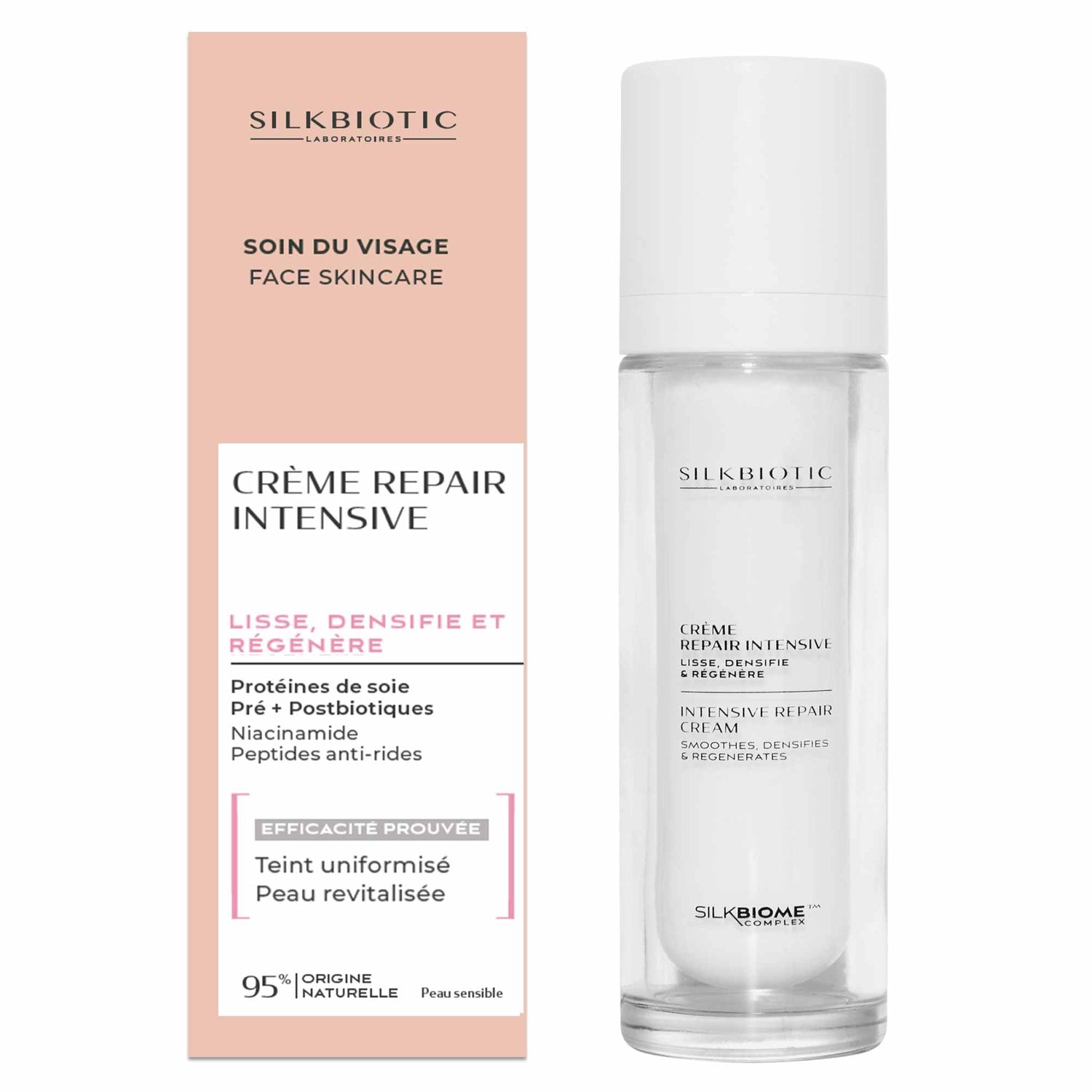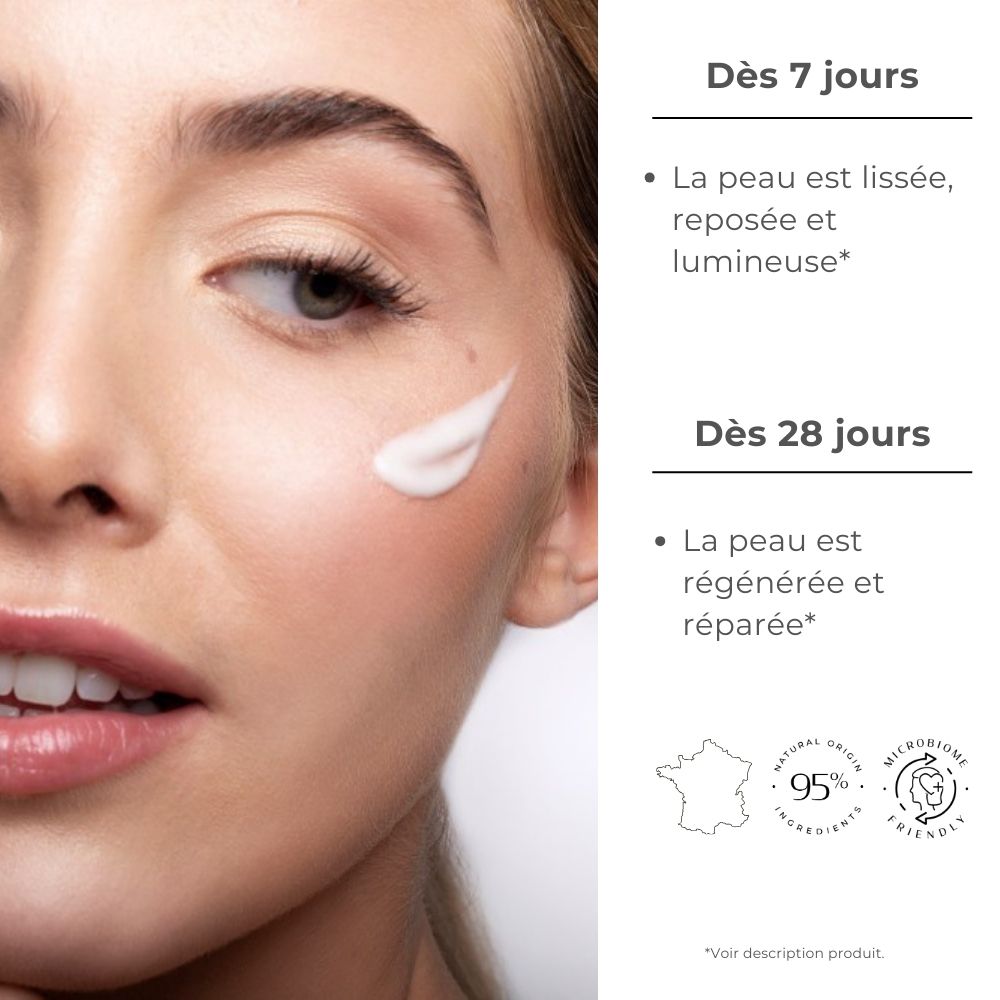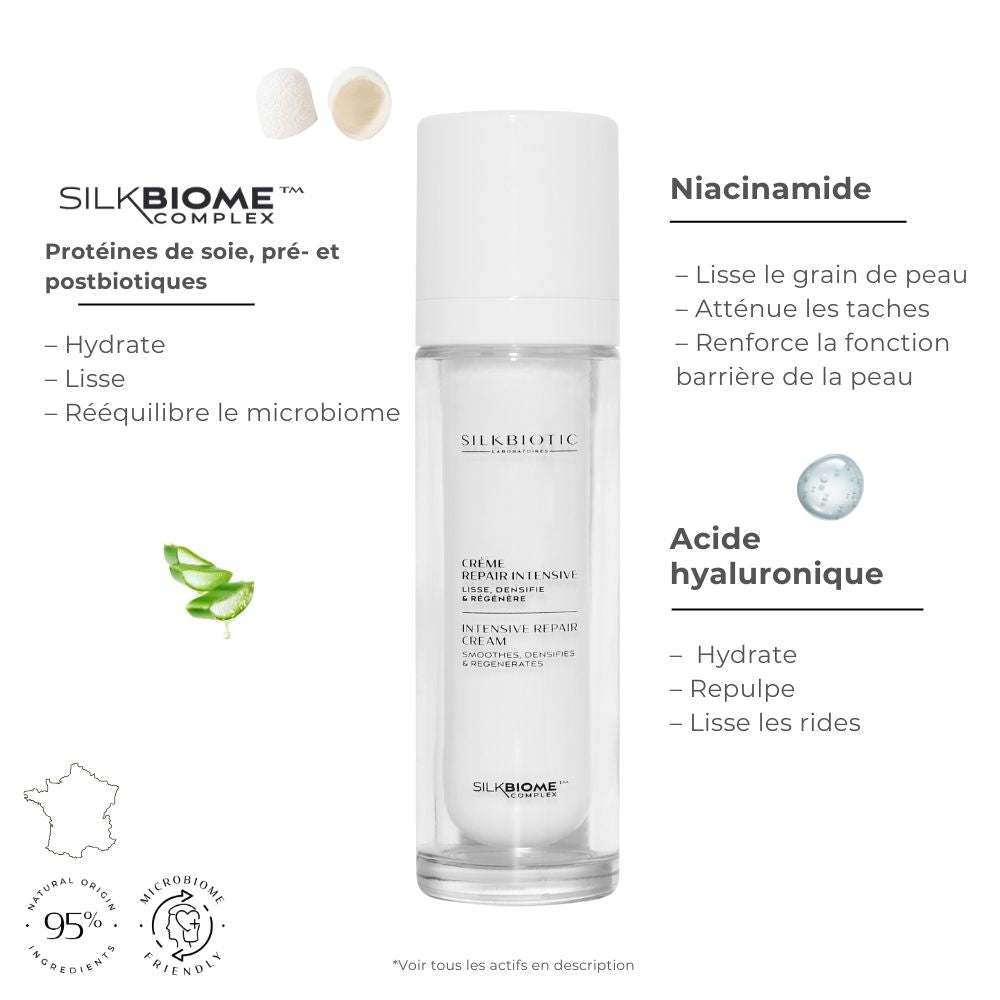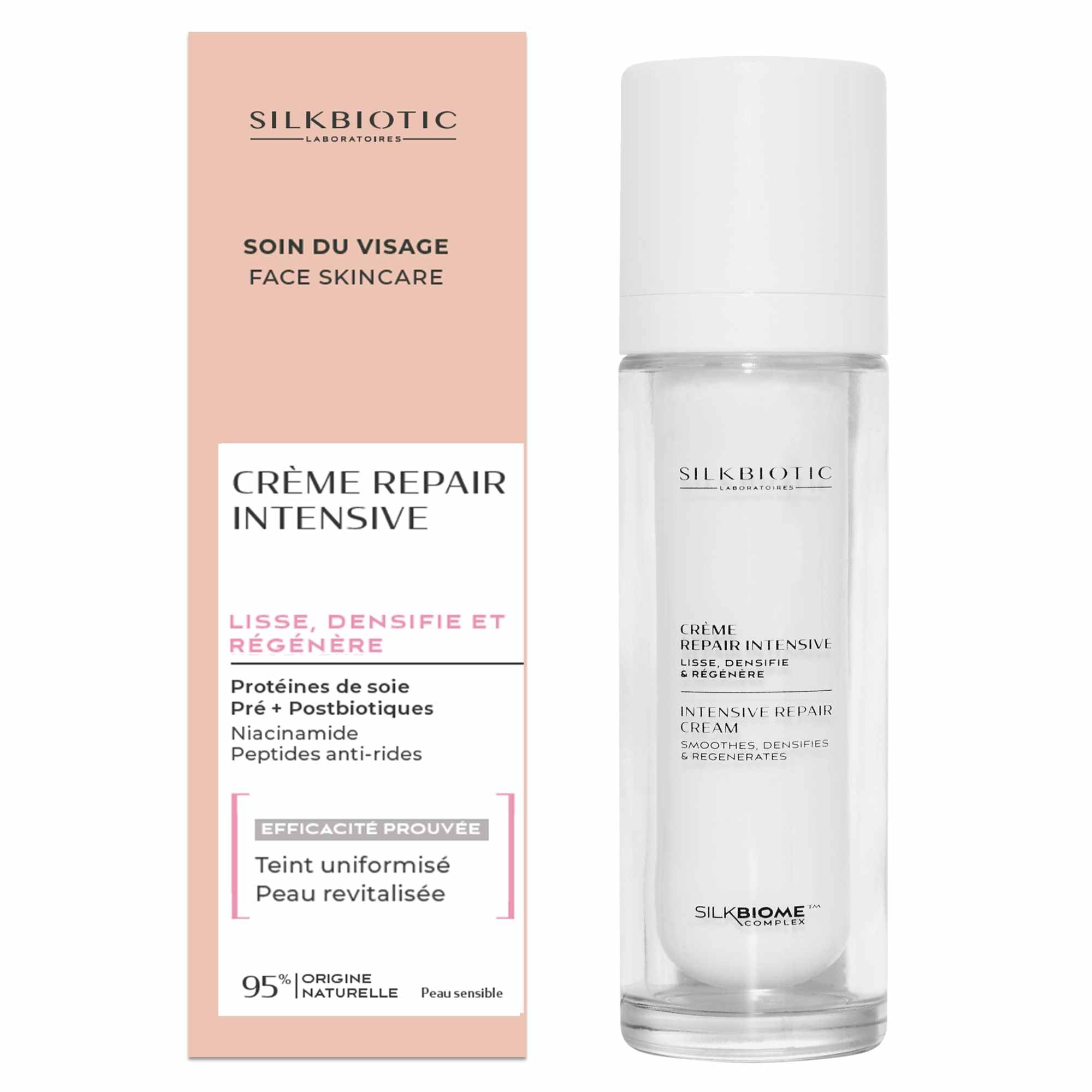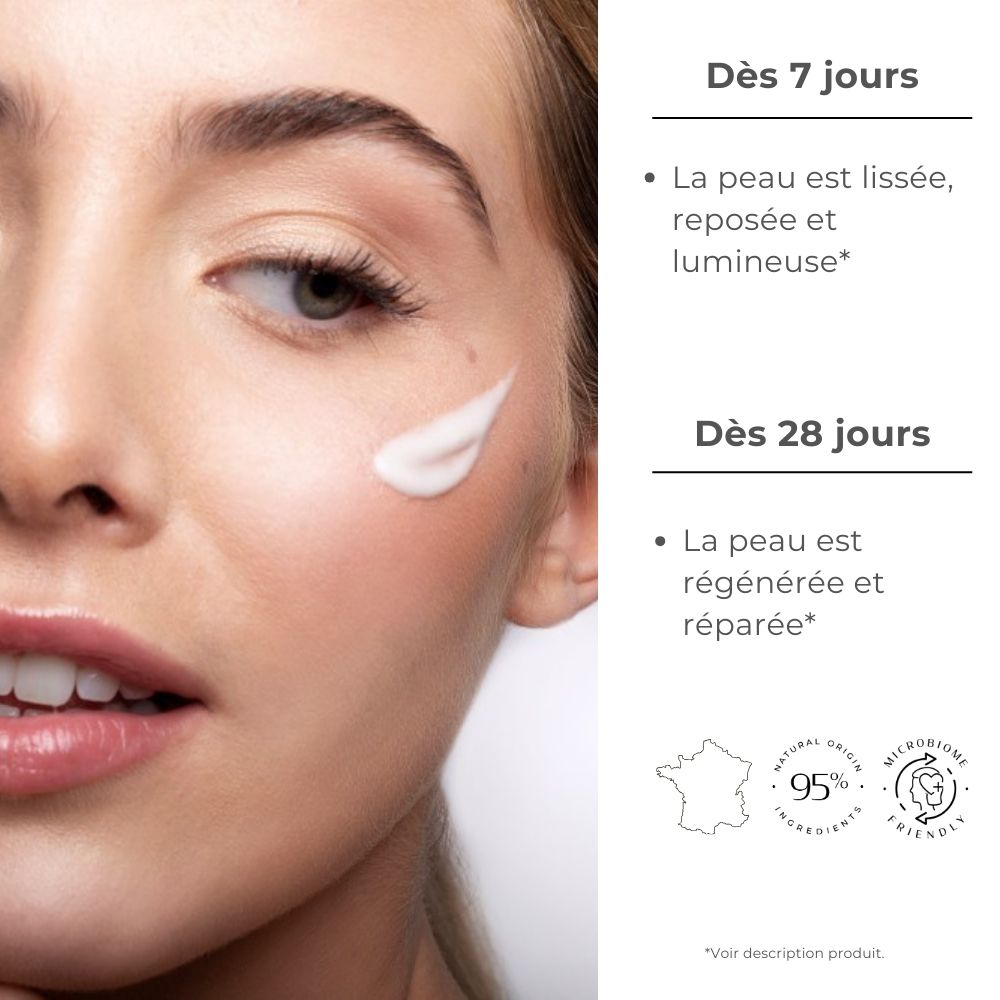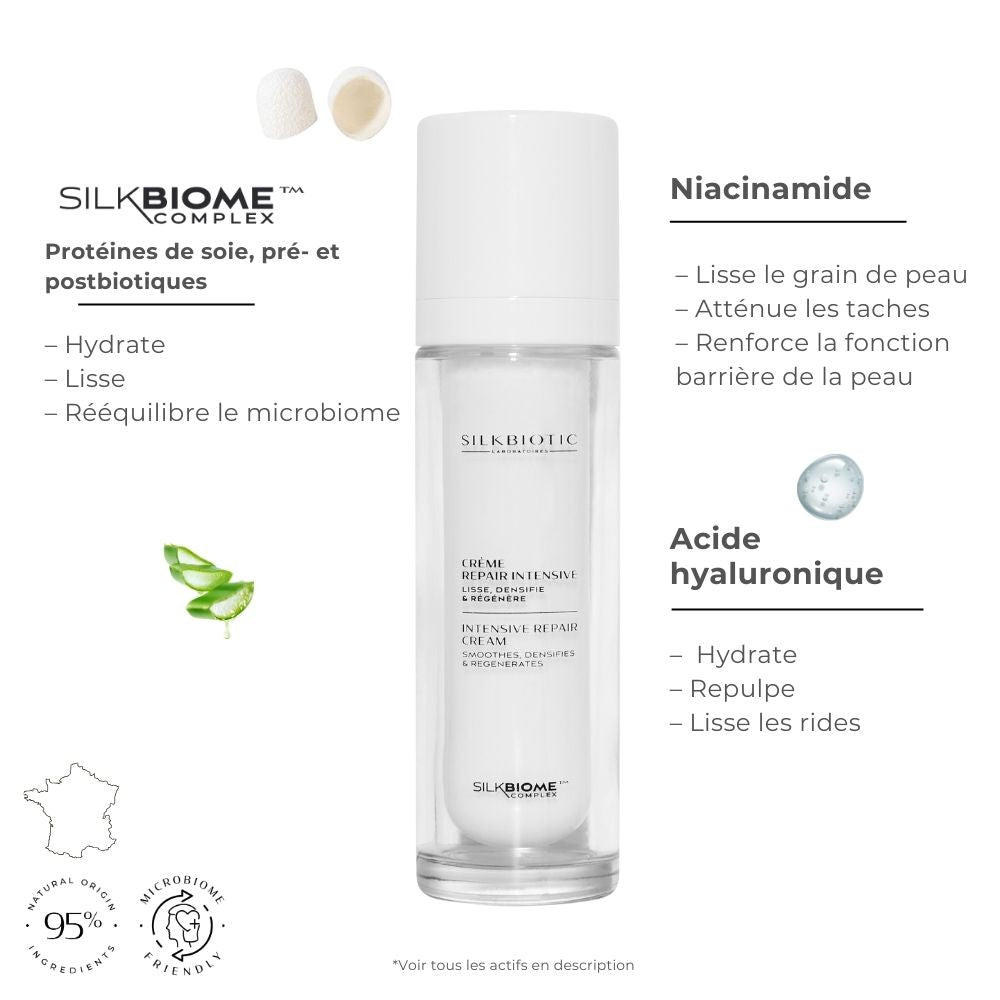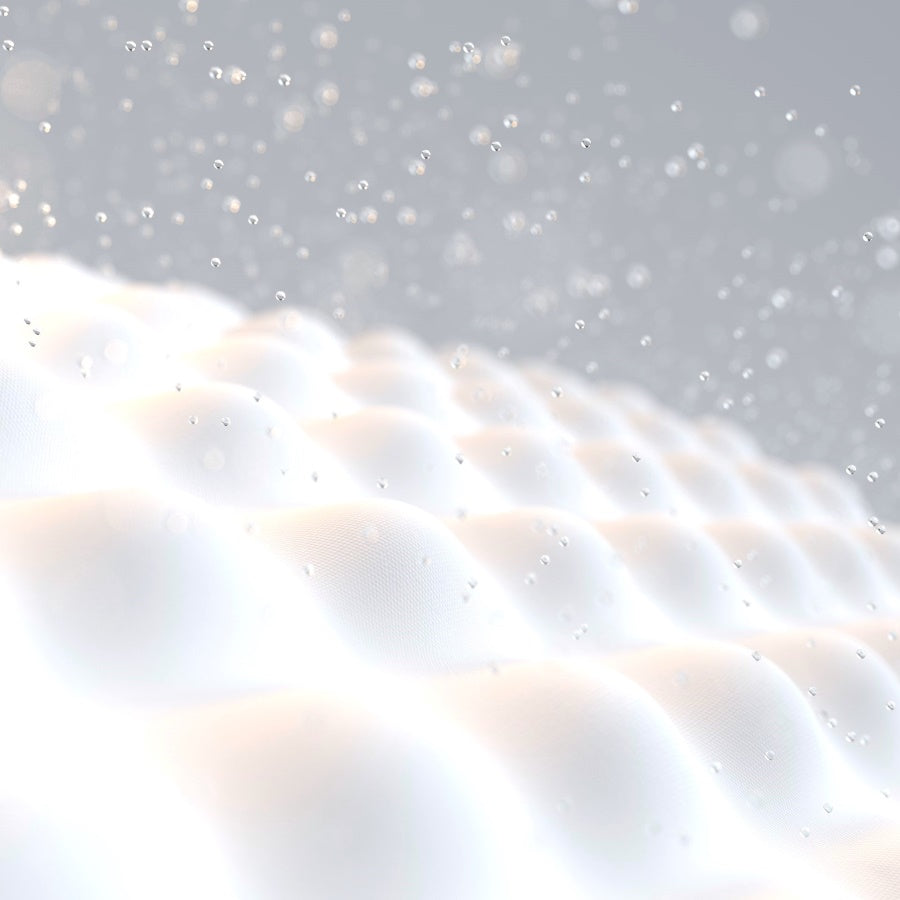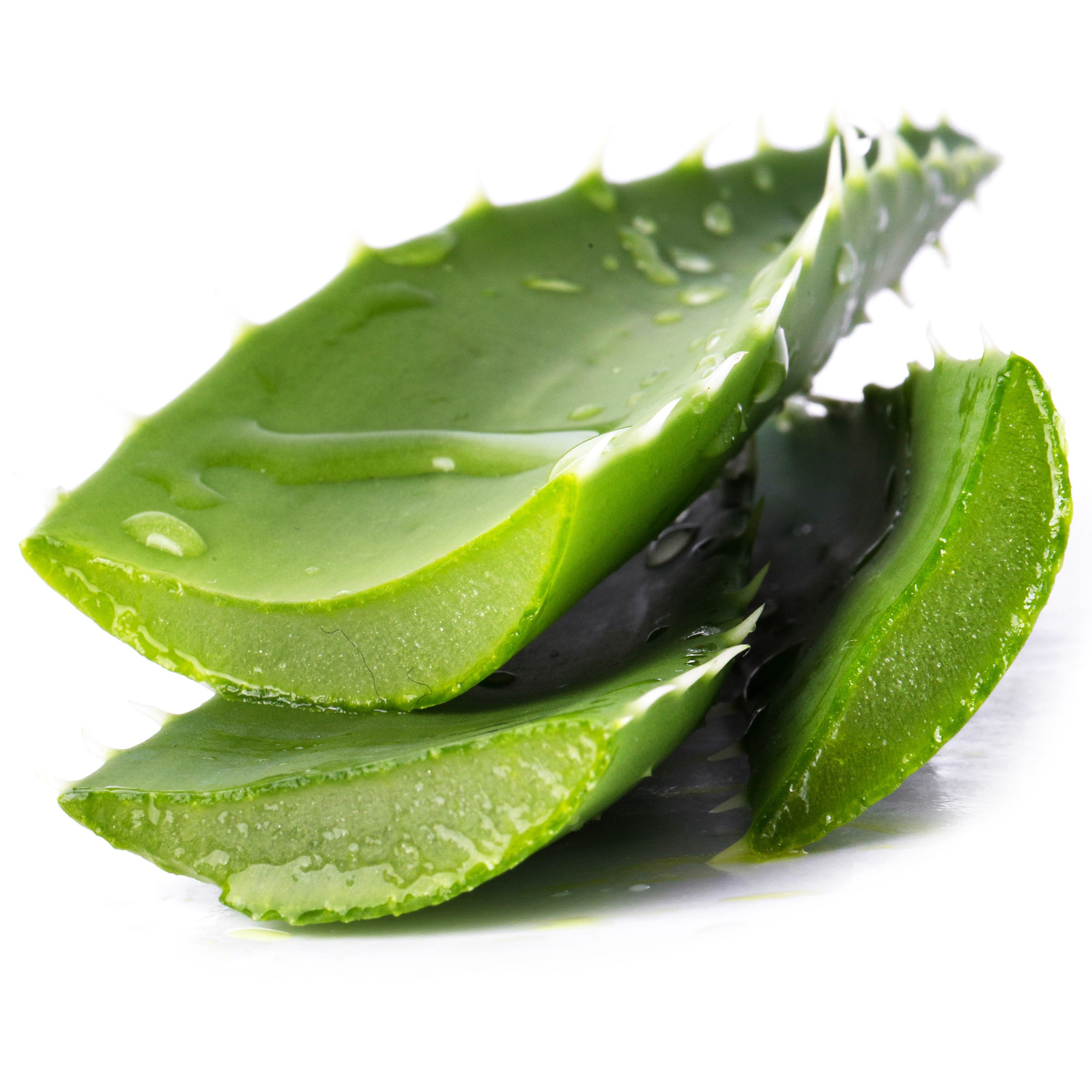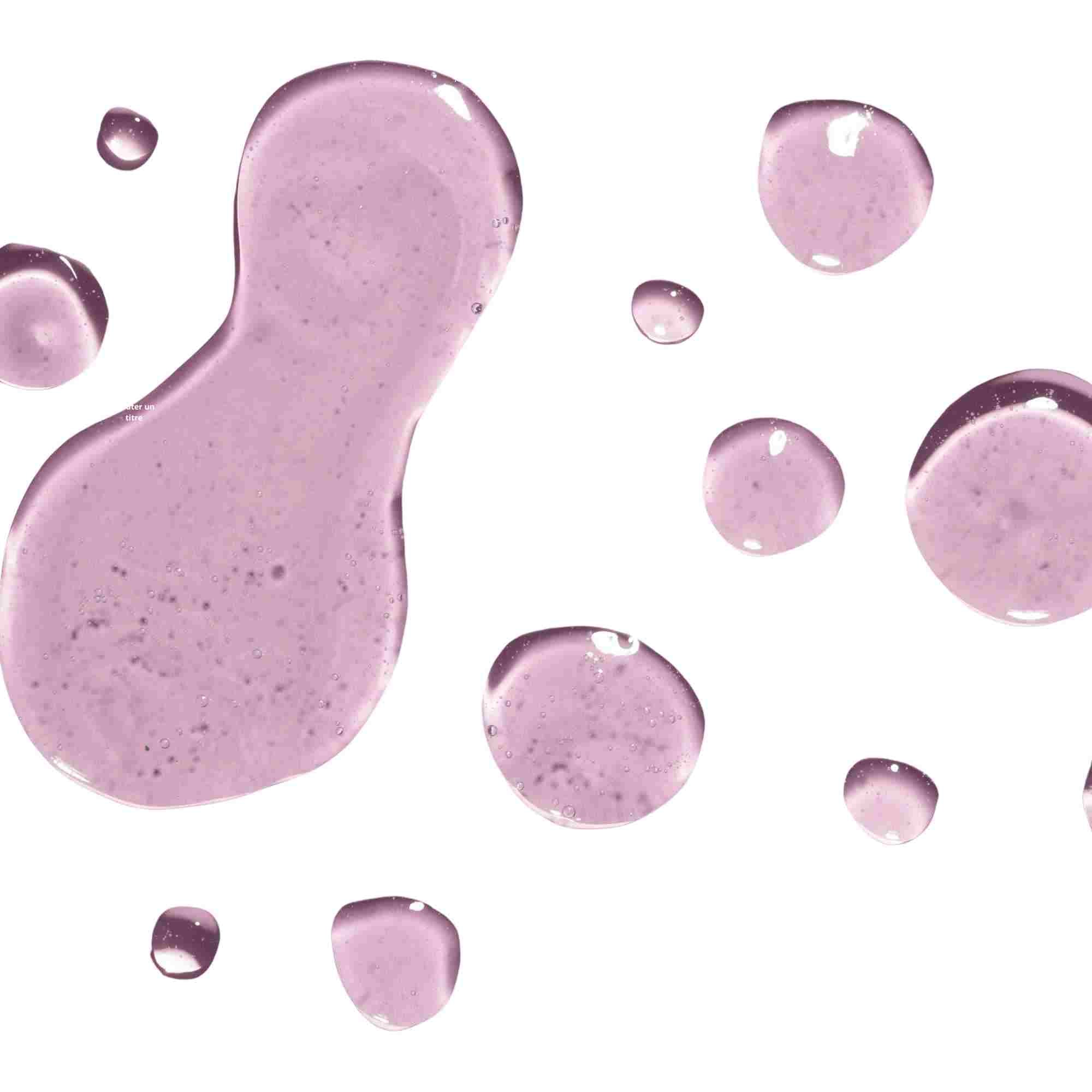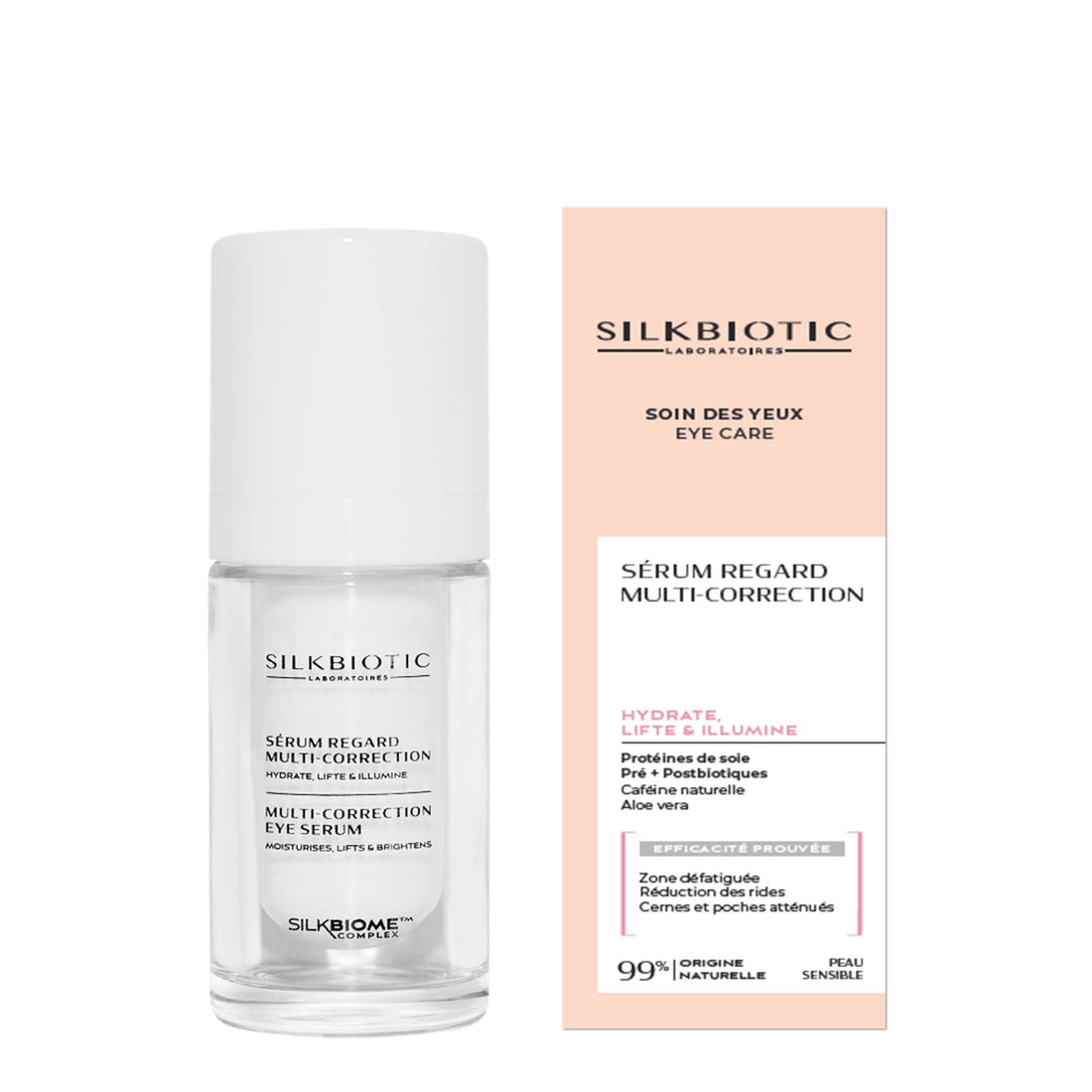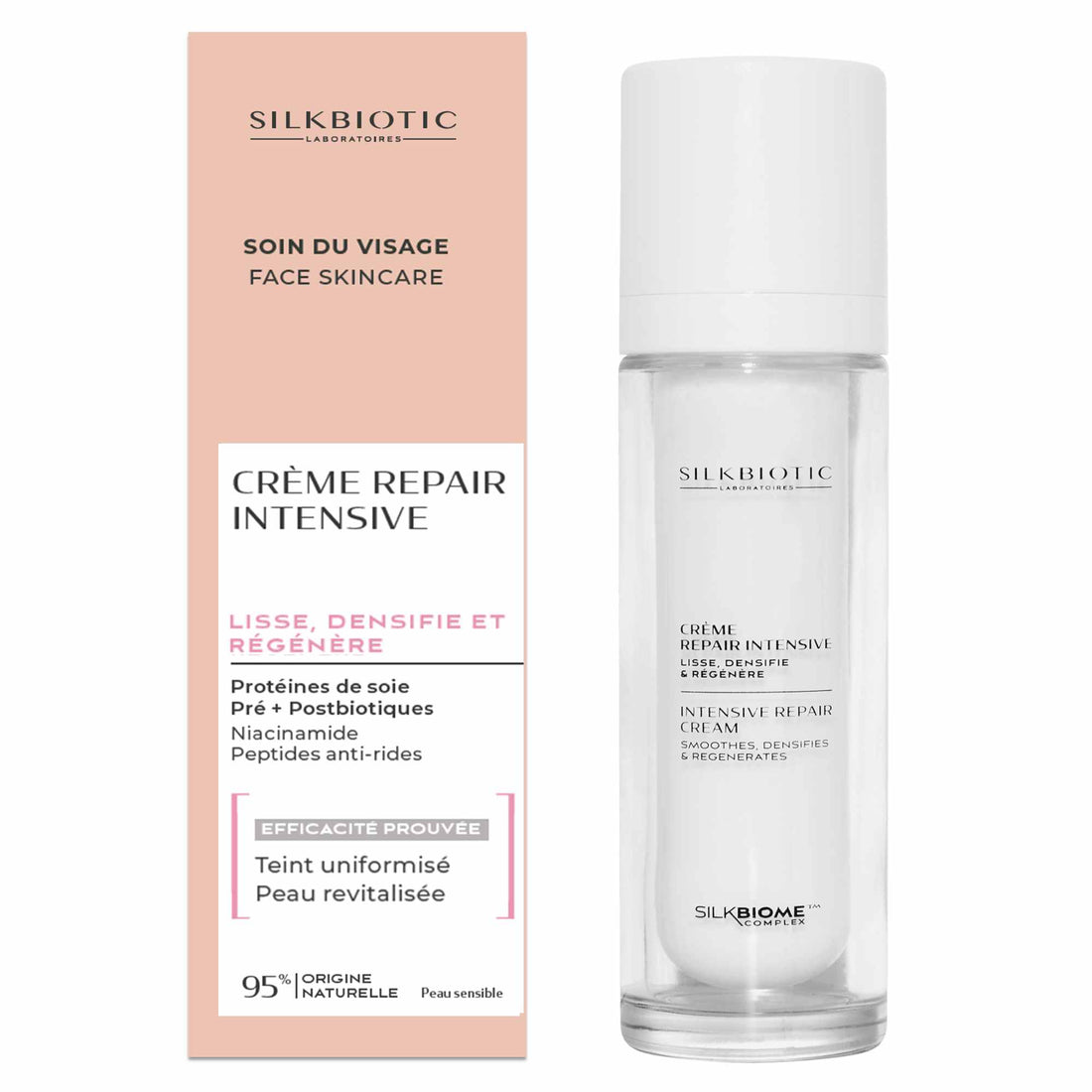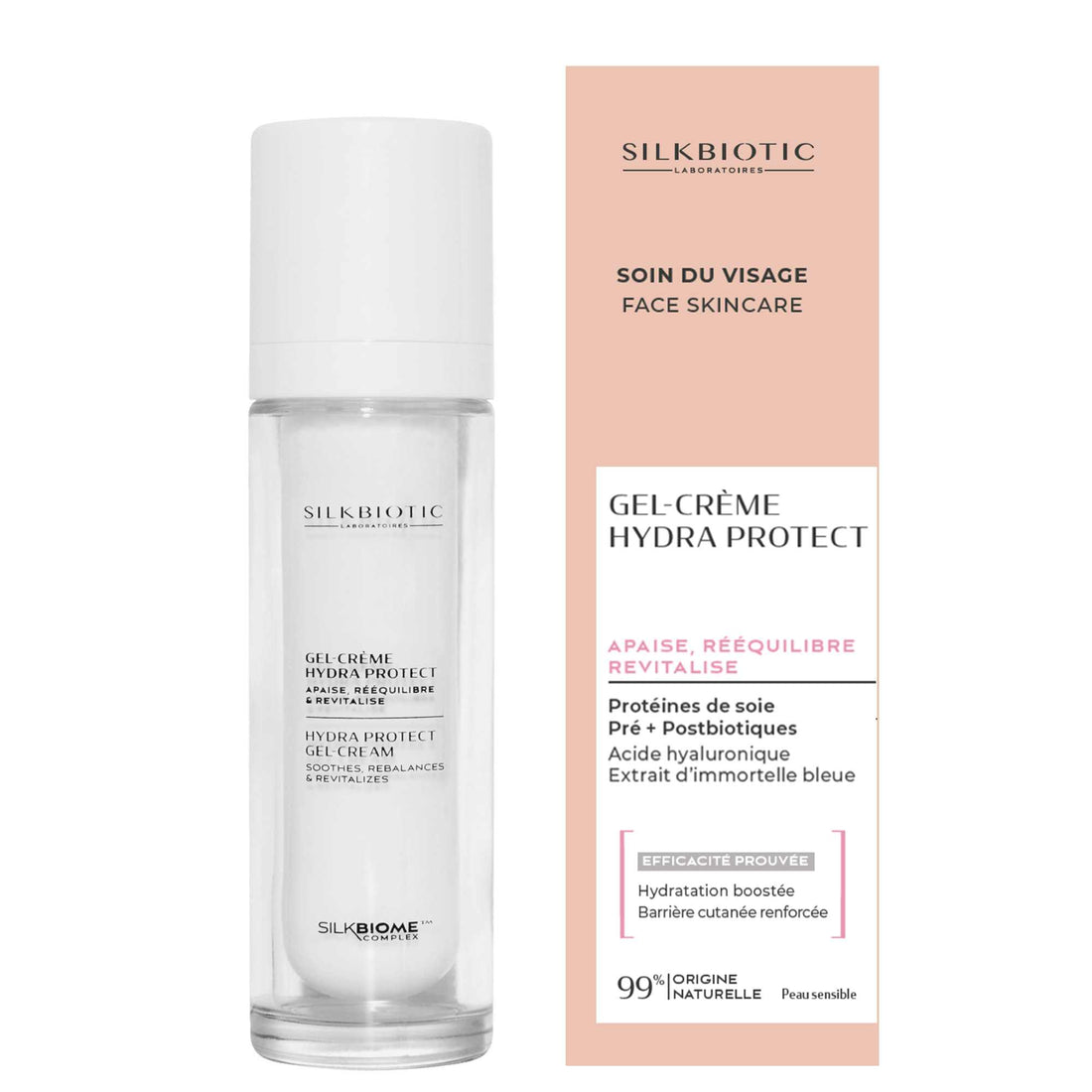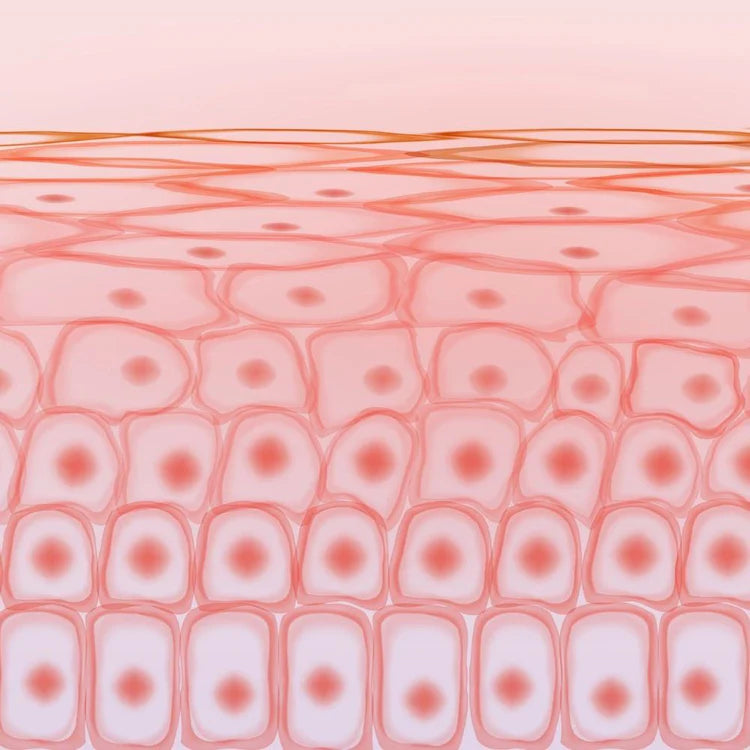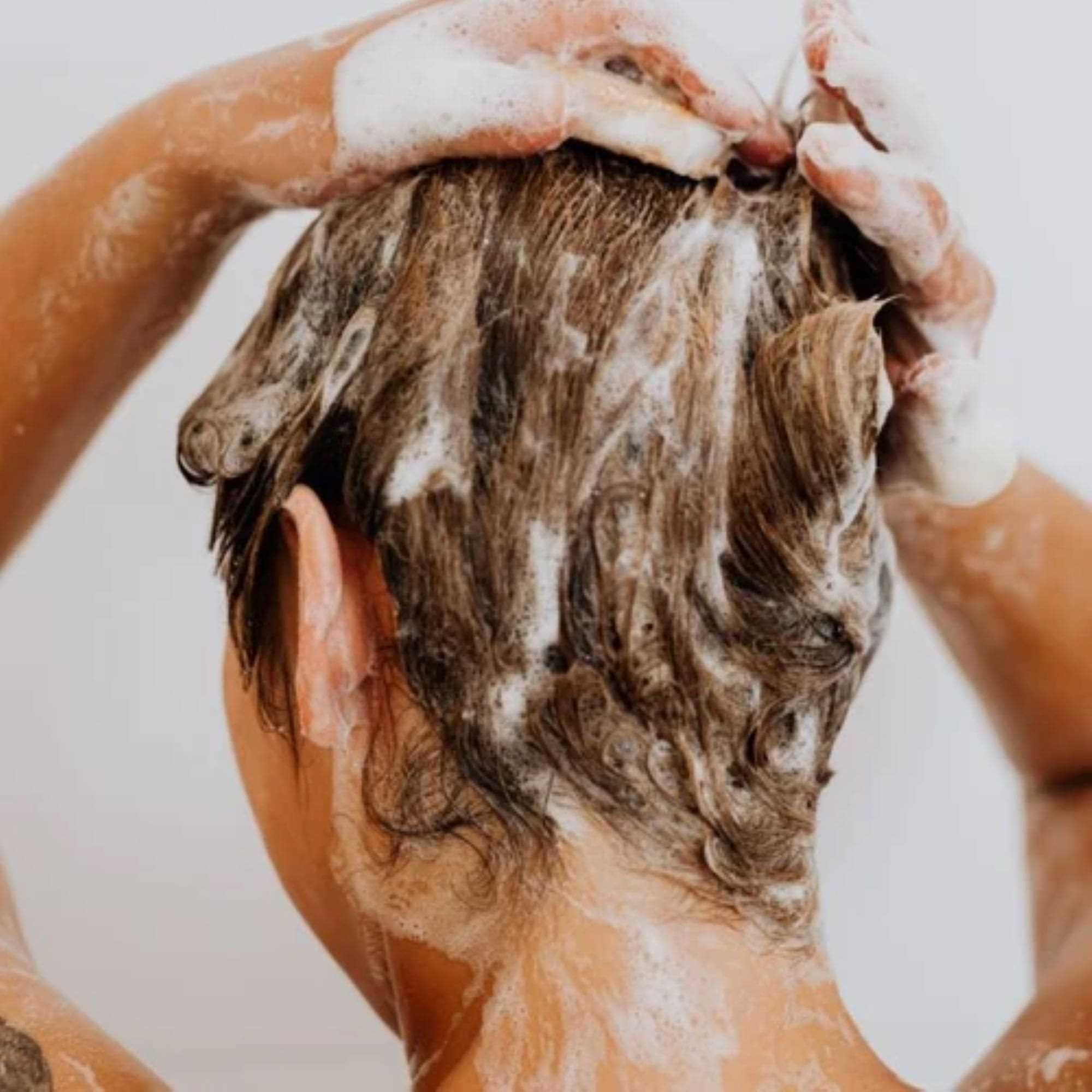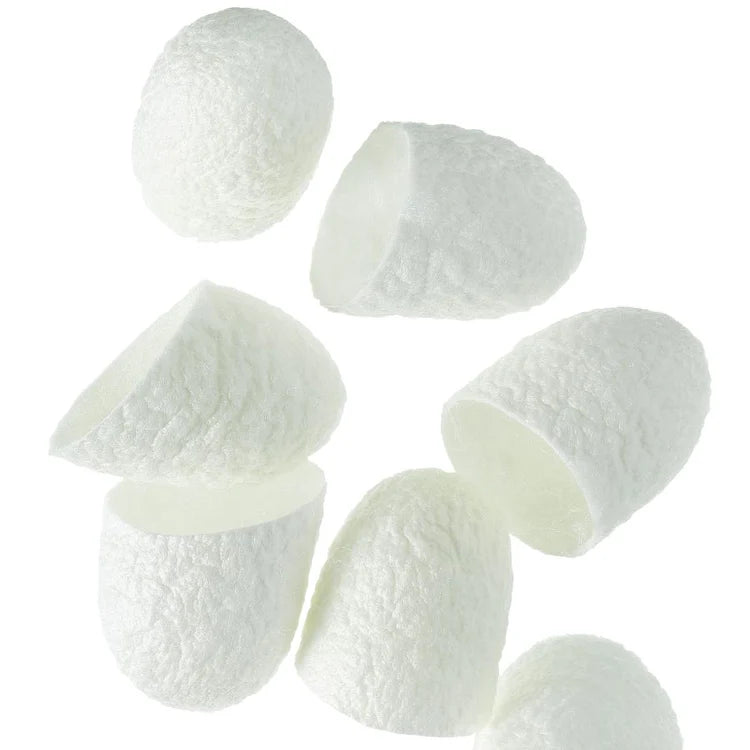Skin aging
Skin aging is influenced by two types of factors:
Internal factors: linked to age and natural processes of the body
Hormonal changes: hormonal variations can affect skin elasticity and textue. Natural degradation of cells: over time, skin cells regenerate less efficiently.
External factors: like sun exposition and pollution
UV rays exposition: the UV rays of the sun are one of the main causes of prematured skin aging. They provoke chemical reactions that damage the skin, reducting collagen production, a key protein for skin firmness and elasticity.
Chemical products and mechanical stress: pollution, aggressive chemical products and mechanical stress (like friction) also contribute in the wear and skin aging.
Scientific study*: anti-aging effect of silk for the skin
Silk sericin, a natural protein extracted from the silk worm (Bombix mori), is a spin-off product of the silk manufacture. This protein is more and more used in cosmetic and medical products thanks to its numerous beneficial properties for the skin.
A recent scientific study looked at the anti-aging effects of silk sericin by using skin cells cutures. Here are the main results:
Stimulation of collagen production
Silk sericin can stimulate collagen production, an essential protein to maintain skin firmness and elasticity.
Reduction of nitrite levels
Nitrite can cause oxidative stress, a process that damages skin cells. Silk sericin helps decreasing those levels, thus disminishing oxidative stress.
Increase of bcl-2 production
Silk sericin increases the production of the bcl-2 protein, which prevents skin cells from dying, thus contributing in a healthier and younger skin. This anti-aging effects of silk sericin are comparable to those of vitamin C, another substance known for its anti-aging properties. Concerning oxidative stress, silk sericin is even more efficient that vitamin C.
Practical applications and perspectives
The results of the study carried out by the Laboratoires SILKBIOTIC team suggest that silk sericin could be an excellent ingredient for skincare products, cosmetics and high-quality dietary supplements. Here are some of its potential applications:
- Moisturizing and protective: silk sericin is known for its moisturizing properties and its ability of protect the skin against damages caused by Us and oxidation.
- Creams and anti-aging serums: by stimulating sollagen production and oxidative stress, silk sericin can help preventing and reducing the signs of age of the skin.
- Healing products: silk sericin also helps healing wounds and protecting skin cells, making it a precious ingredient for products destines to damaged or sensitive skins.
Study on fibroblasts growth
Fibroblasts are essential cells for skin health and regeneration. A study compared fibroblasts growth in three conditions: one without addition (negative control), with vitamin C (positive control), and with silk sericin.
Main results:
- Day 0 to day 3: The cells concentration progressively increased in the three groups, with a more noticeable growth for cells treated with silk sericin.
- Day 5: The cells growth started disminishing in every groups, but this decrease was less obvious for the cells treated with silk sericin.
- Day 7: Cells treated with silk sericin stayed stable, indicating a conservating effect of cells.
This study shows that silk sericin helps in favoring fibroblasts growth, while not being toxic for the cells. It also contributes in the healling process.
The cell concentration differences between the three group in day 5 were statistically significant, confirming the efficacy of silk sericin.
Silk sericin reveals itself to be a promising ingredient for skincare products thanks to its moisturizing, protective and anti-aging properties. By stimulating collagen production, by reducing oxidative stress and by protecting skin cells, silk sericin can contribute in a healthier and younger skin. The results and scientific studies underline its potential to be integrated in high-quality cometic and medical products.


